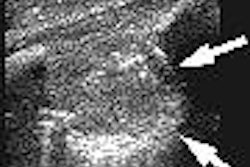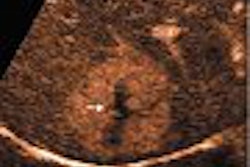An echocardiogram finding of increased left ventricular mass may portend even greater cardiovascular risk for Hispanics, according to a new study presented at the recent American College of Cardiology (ACC) meeting in Orlando, FL.
"We show in our study for the first time in a large Hispanic population that left ventricular mass as measured by echocardiography is related prospectively to cardiovascular events -- that being myocardial infarction, stroke, or vascular death," said Dr. Carlos J. Rodriguez, an assistant professor of medicine at Columbia University in New York City.
"No other study has looked prospectively at Hispanics as a group in the U.S., and as we know, this is the largest minority group and the fastest-growing minority group in the country," Rodriguez said. "So we're talking about a lot of people with a lot of health issues, and we're talking about a high-risk group."
Increased left ventricular mass is considered predictive of cardiovascular morbidity and mortality. Hypertrophy is more prevalent among African Americans, and carries worse outcomes for them than for Caucasians. Rodriguez and his co-investigators hypothesized that Hispanics might also tend toward higher mass and greater related risk.
The researchers prospectively examined 1,081 Hispanics participating in the Northern Manhattan Study (NOMAS) with echocardiography. All the participants were at least 40 years old without a history of heart attack or stroke.
Rodriguez's team calculated left ventricular mass using the modified American Society of Echocardiography formula, with left ventricular mass indexed to height to the 2.7th power (ht2.7).
Hypertrophy was defined as greater than or egual to 51 g/ht2.7 for men, and greater than or equal to 47 g/ht2.7 for women. The left ventricular mass in the study population averaged 48.4 g/ht2.7.
"The prevalence of left ventricular hypertrophy was 36%," Rodriguez noted. "This is very high in comparison to the prevalence found in the Framingham study, which looked at predominantly Caucasians."
Rodriguez and colleagues then followed the group for an average of 57 months, during which 74 cardiovascular events occurred.
After adjusting for age, gender, systolic blood pressure, diabetes, hypercholesterolemia, smoking, and body mass index, investigators found the annual rate of cardiovascular events was 2.18% in the highest quartile of left ventricular mass and 0.86% in the lowest (p = 0.007).
The association between left ventricular mass and end points of heart attack, vascular death, or stroke was significant.
Increased left ventricular mass "yields independent prognostic significance among Hispanics, predicting a higher incidence of cardiovascular disease events in this understudied population," the researchers concluded.
More studies are needed to better identify risk factors among various Hispanic subgroups, Rodriguez added.
Given that his study included relatively few people from Mexico and other Latin American nations, he said, "We need more studies to look at determine how this subgroup of Latino Americans will compare with those from the Caribbean."
By Jerry Ingram
AuntMinnie.com contributing writer
April 4, 2005
Related Reading
Echocardiographic testing predicts outcome of asymptomatic mitral regurgitation, March 3, 2005
MDCT, maybe equivalent to MRI, tops echo and SPECT for heart function, February 15, 2005
Studies highlight cardiac MR's prognostic potential, January 21, 2005
Childhood adiposity predicts cardiac mass in adulthood, November 23, 2004
Racial differences in LV mass seen in hypertensive patients, June 23, 2004
Copyright © 2005 AuntMinnie.com



















